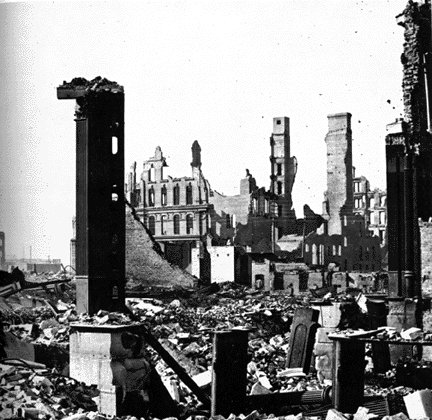Watchmen Schaffer sent the city's 185 firefighters to the wrong location. When the firemen reached the right location, their 17 steam engine fire trucks could not contain the blaze. It seemed nothing could stop the conflagration which continued to burn the following day, destroying the city's business district. The flames licked at the courthouse, where prisoners were living inside. Chicago's mayor ordered the prisoners released. The flames made their way up the side of the building to the cupola which collapsed sending the bell crashing to the ground, a sound heard a mile away.
The fire leaped the Chicago River a second time, landing on a railroad car filled with kerosene. A burning piece of timber lodged on the roof of the city's waterworks. Soon the flames filled the building, rendering the water mains useless. The firefighters stood helpless as the blaze consumed the city.
By the third day, the fire finally extinguished itself. Rain fell. The smoke cleared. Chicago's business district was a mass of rubble. Eighteen thousand buildings were destroyed. Two thousand lampposts were ruined. Seventy three miles of roads and 120 miles of sidewalk were burned. Two hundred million dollars of damage was incurred. Three hundred people had died. It went down in history as one of the greatest tragedies of the 19th Century.

No comments:
Post a Comment